Art World
‘The Western Press Love Dissing Russia’: Garage’s Chief Curator Kate Fowle Builds a Cultural Bridge to Moscow
Dasha Zhukova's Garage marks its 10th anniversary as the World Cup kicks off in Moscow—and Juergen Teller is a big fan of both.
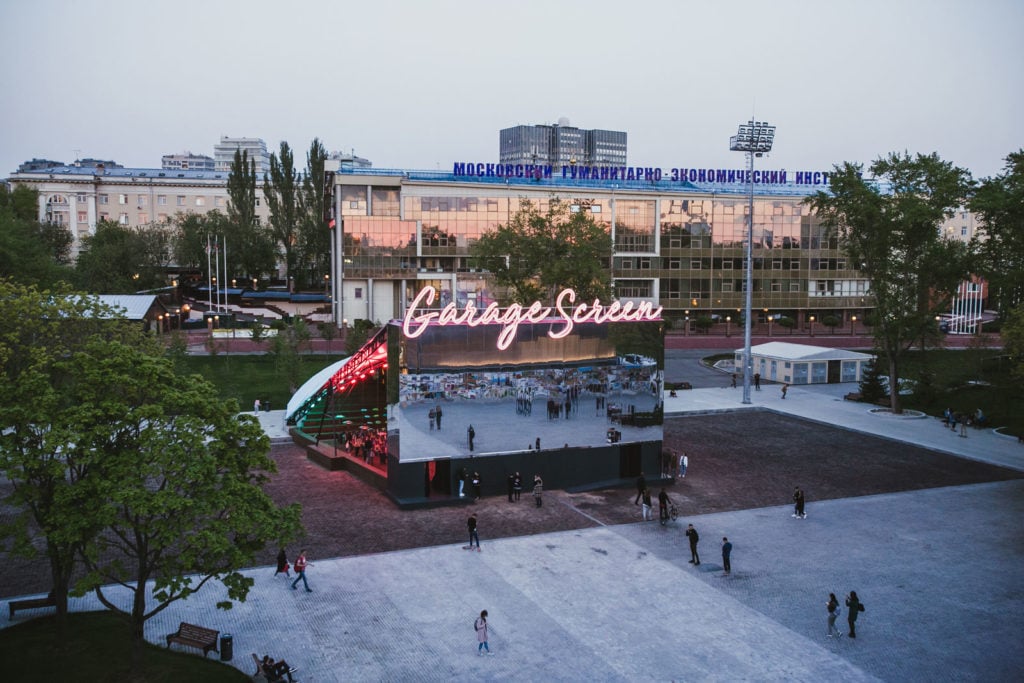
Dasha Zhukova's Garage marks its 10th anniversary as the World Cup kicks off in Moscow—and Juergen Teller is a big fan of both.

Naomi Rea

Moscow’s Garage Museum of Contemporary Art, which is celebrating its 10th birthday, is expanding in the Russian capital and becoming increasingly active on the international stage. The first group of new Garage Patrons is visiting Art Basel this week. Three years after moving to the city’s Gorky Park and a colossal Soviet-era café, which was converted and clad in polycarbonate by Rem Koolhaas in 2015, Dasha Zhukova’s private museum is creating a campus within the Russian capital’s equivalent of New York’s Central Park. Buildings will house studio space for its recently announced residency program and an expanding archive of contemporary Russian art.

The opening of the Garage’s new building designed by the architect Rem Koolhaas in 2015. Photo by Ivan Simonov, courtesy Garage Museum of Contemporary Art.
The young museum has traveled a long way over the past decade. What began as Zhukova’s pet project on in the Moscow suburbs has now become a magnet for millennials, attracting nearly 800,000 visitors last year. The philanthropist and art collector launched it in 2008 with her then husband, the billionaire Roman Abramovich. Its first home was a Constructivist-era bus garage, which is now the Jewish Museum and Tolerance Center, in a working class neighborhood of North Moscow.
Several leading artists have helped marked the Garage’s anniversary, including Urs Fischer, who has designed a temporary logo for the festivities, and Marina Abramović, Takashi Murakami and Rashid Johnson, who among others have made their own video tributes to the institution.
Last weekend it launched its summer shows, the highlight of which is a display of photos and videos by Juergen Teller that chronicle his obsession with soccer, aptly timed to the 2018 World Cup, which kicks off in Moscow on Thursday, June 14. Teller’s “Zittern auf dem Sofa” (Trembling on the sofa), on through August 19, will also broadcast the photographer watching every nail-biting game Germany plays in the tournament.
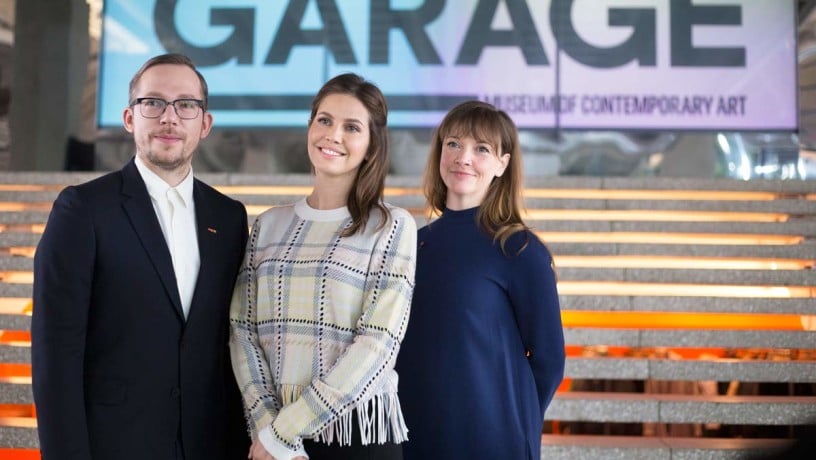
Garage Museum of Contemporary Art director Anton Belov, founder Dasha Zhukova, and chief curator Kate Fowle.
As Garage turns ten, we speak to the institution’s British-born chief curator, Kate Fowle, about her experience leading an ambitious and internationally well-connected museum in the Russian capital at a time when the country is increasing isolated from the rest of Europe.
Fowle joined Garage at a transitional time for the institution, becoming chief curator in 2013 after it has left the bus depot and was occupying a temporary “paper pavilion” in Gorky Park designed by the Pritzker prize-winning Japanese architect Shigeru Ban. In May 2014, what had been the Garage Center for Contemporary Culture officially became the Garage Museum of Contemporary Art before it moved into its permanent building in 2015.
“The easiest way to understand the transition is that, at the stage when Dasha first set up the institution, it was very much to provide a platform for things that you wouldn’t otherwise see in Moscow,” Fowle tells artnet News. In the early days, Zhukova brought in many projects that were successful in other places, such as Marina Abramović’s 2010 extended performance piece, The Artist is Present. But by the end of 2014, Garage had shifted from being a Kunsthalle-style receiving space to becoming more of a production house. Today it even sends its own shows abroad, such as a group show of Robert Longo, Francisco Goya, and Sergei Eisenstein’s work, “Proof,” which recently traveled to the Brooklyn Museum and the Deichtorhallen Hamburg.
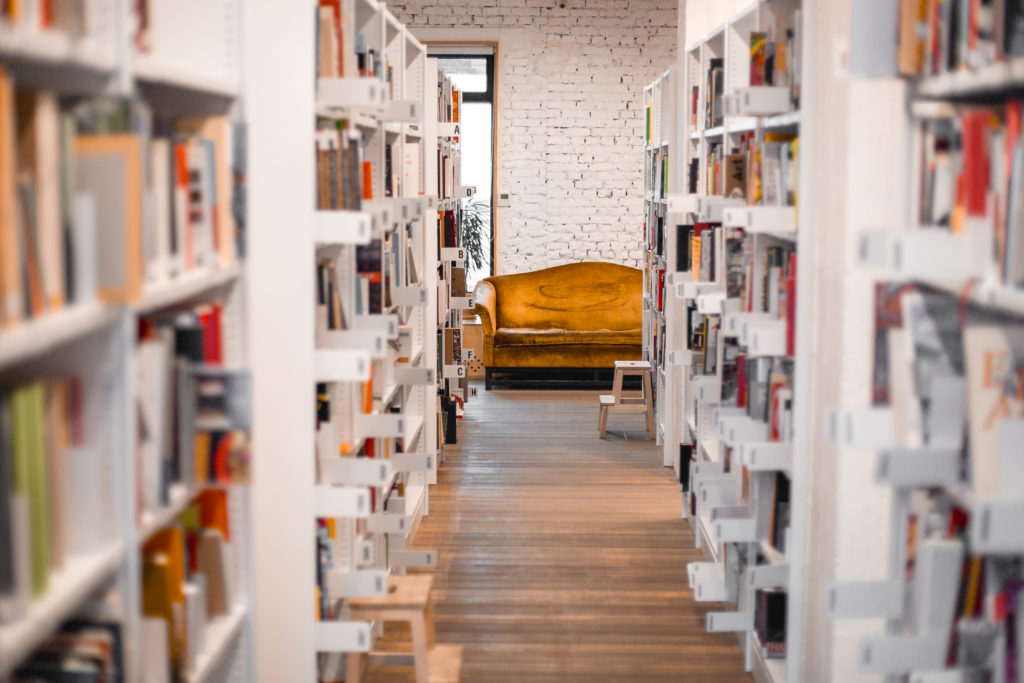
Garage’s Library. Photo by Sasha Serbina, courtesy Garage Museum of Contemporary Art.
What are the pitfalls of running a contemporary art museum in a country notorious for its conservativism? Religious groups and ultra-nationalists in Russia have a history of attacking works of art they deem sacrilegious or unpatriotic. Last month a nationalist attacked Ilya Repin’s 1885 painting Ivan the Terrible and His Son Ivan at the city’s State Tretyakov Gallery because he disagreed with the way the 16th century Russian tsar was depicted. But nothing like this has happened at Garage, which might be somewhat insulated from political criticism by its status as a private museum, rather than a state-run gallery.
Fowle, who also has experience of working in China where she was the first International Curator at the Ullens Center for Contemporary Art in Beijing, says that the Russian government does not interfere with Garage’s activity, “The Western press love dissing Russia but it’s more the kind of action that certain groups take, mostly religious groups,” she says, adding: “We’ve never been stopped in doing anything, including presenting Pussy Riot and Raymond Pettibon.”
There are certain laws museums must comply by, for example a state-regulated age rating system for exhibitions, Fowle says. The museum can set its own age rating, but has to abide the law regarding things like nudity, and restricts children from accessing certain exhibitions accordingly; the Teller show, for example, has been rated 18+ (at the center of the show is a shot of a naked Teller with a beer bottle and a soccer ball, standing on his father’s grave).
Other challenges about working in Russia include linguistic and cultural hurdles. For a successful exhibition, you have to create an understanding between different perspectives, and the Garage curators spend a lot of time explaining ways of thinking when working with international artists. “If every artist wants to come and start talking about Malevich and the [early 20th-century] avant-garde, a Russian audience will roll their eyes,” she says. “The great discovery that somebody has from the outside is not necessarily the thing that needs to be discovered by people on the inside.”
Under Fowle’s leadership, the museum expanded its own curatorial department, placing a greater emphasis on exhibition-making and research to forge a strong foundation through which the museum could develop its own program.
This resulted in the development from 2014 of the museum’s archive of contemporary art, which is the first public resource of its kind in Russia. It is developing an extensive repository of documentary materials about contemporary art in Moscow, St. Petersburg, and other Russian cities, collecting catalogues, unpublished texts and photographs of historic exhibitions. The aim is to document the contemporary scene from the unofficial art of the Soviet era in the mid-’50s through to the present day, finding and preserving records of some the earliest exhibitions of nonconformist art.
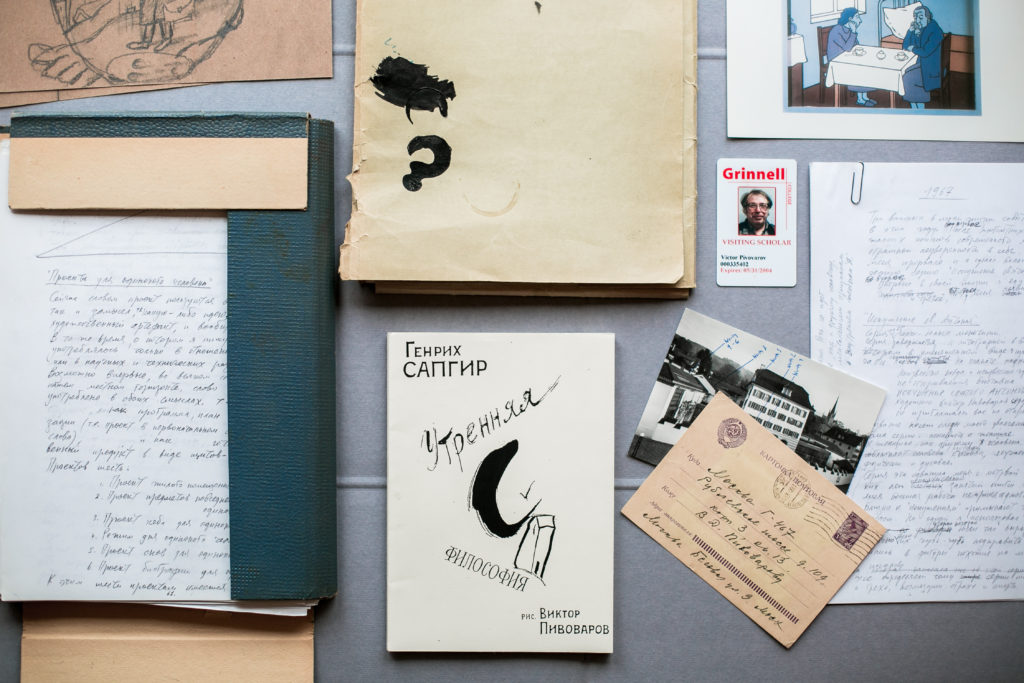
Garage’s Archive Collection. Photo by Anastasia Ivanova, courtesy Garage Museum of Contemporary Art.
The archive provides the basis for the museum’s “Field Research” think tank, a resource for artists, curators, and writers to consult when they are looking for insight into overlooked or unknown events, places, people, or schools of thought connected to Russian culture.
The Garage’s larger curatorial team also enabled the museum to research contemporary art practice across the country and to launch initiatives such as the Garage Triennial of Russian Contemporary Art in 2017—the centenary year of the Russian Revolution—to much fanfare.
The museum also has a library dedicated to the art of the 20th and 21st century that contains around 20,000 volumes, including monographs, catalogues, books and journals. “People in Moscow, when it comes to exhibitions, they love reading,” Fowle says, adding that visitors to the museum sometimes spend hours pouring over texts from rare books on the Russian avant-garde to all sorts of Samizdat, texts banned by the Soviet state that were reproduced and distributed in secret.
In its first year, Garage welcomed just 10,000 visitors. When Fowle came aboard in 2013 that number had jumped to 35,000. Last year the museum attracted nearly 800,000 people.
Fowle says Garage’s audience is predominantly Russian and generally from the post-Soviet generation, meaning that it, like the museum’s 380 staff members, comprises mostly people in their mid-to-late twenties. For the past four years the museum has also been inviting teenagers to work with them for a year at a time to gain work experience and share what they think is important. Reaching a new, younger audience is working: Around 60 percent of the museum’s visitors are newcomers.
“Unlike most museums across Europe and in the US that are trying to get their audiences to be younger, we’re interested in getting older audiences as well now because the young people ain’t no problem,” Fowle says, laughing. People who grew up under the Soviet system are now entering their nineties, she explains, and are less comfortable in a museum environment because somewhere like Garage wasn’t available during Soviet times. Which isn’t to say the museum doesn’t strive to attract older visitors with bring-grandma-to-the-museum initiatives.
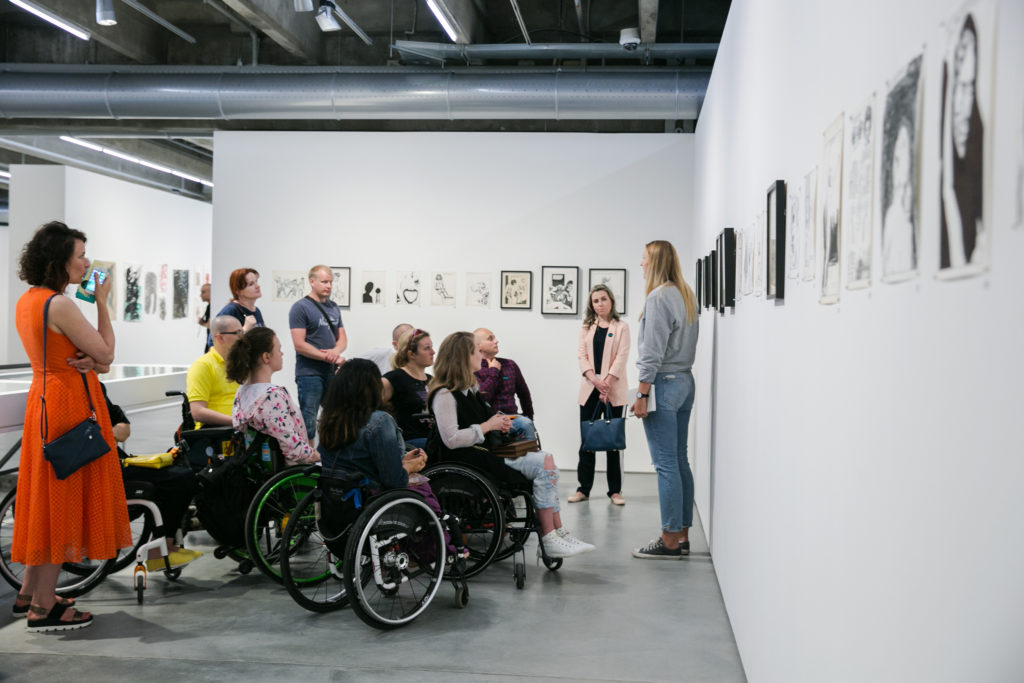
Inclusion at work. Image by Sasha Serbina, courtesy Garage Museum of Contemporary Art.
The museum also established an inclusion program in 2014 to find ways to provide a more accessible environment as well as creating a program of events and activities geared towards visitors with a hearing or vision impairment, and those with special physical and communication needs. The program is rare in a country where there is very little provision for the disabled. Garage translates most of its talks in sign language, and creates special exhibitions, such as one of the summer shows, titled “Infinite Ear,” running through September 2nd. It invites visitors to hear, feel, and understand sound through vibrations, body movement, sign language, images and fiction.
Looking to the next ten years of Garage and beyond, Fowle sees the museum developing a campus in the park, encompassing studio space for its recently announced residency program, expanding the archive, and developing other buildings. “The idea is for people to be able to visit different buildings of different scales, offering different types of activities that all pertain to culture and how we understand our contemporary societies,” Fowle says, adding that it is an alternative to “going into one building where you have culture in this kind of shopping-mall situation.”
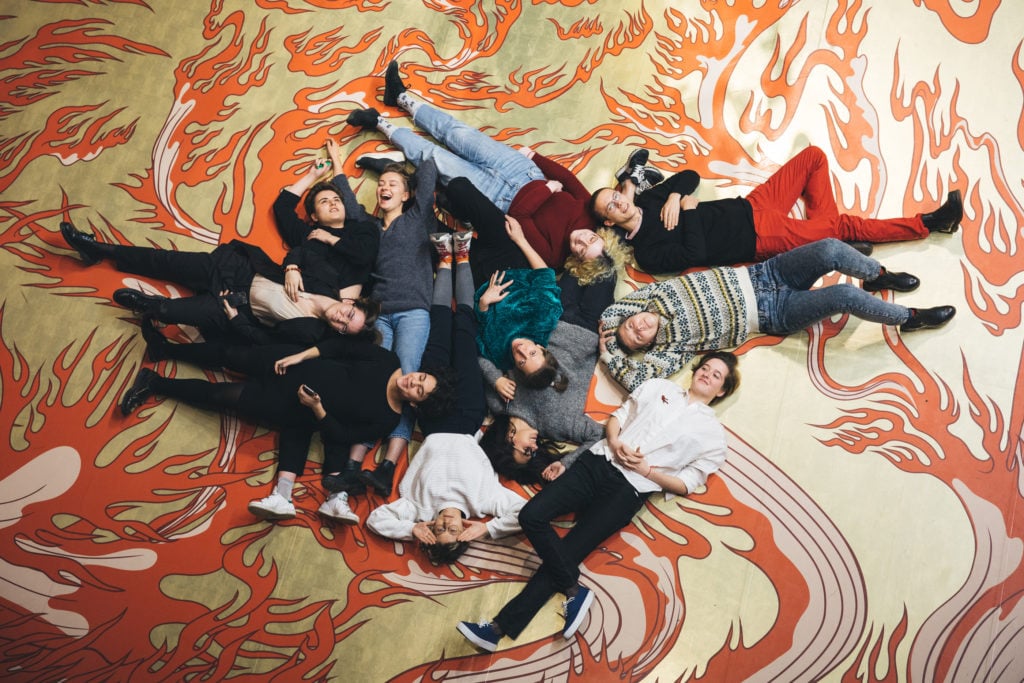
The youth team of the Garage Museum. Photo by Sasha Serbina, courtesy Garage Museum of Contemporary Art.
Garage is also developing its Patrons program, which launched a few years ago and comprises predominantly a younger generation of Russian collectors, business people and creative industry workers who are interested in building collections. It has just taken a group of patrons to Berlin art weekend and is now taking another group to Art Basel for the first time. “It’s basically an opportunity to create a new generation of philanthropists that are interested in artists,” says Fowle. “Rather than collecting predominantly being in relation to the market, what if we could create a system whereby collectors are interested in artists?” She hopes that more studio visits and international engagement will drive collecting away from the iPad and art-as-commodity culture that has developed in recent years and back to the actual artists.